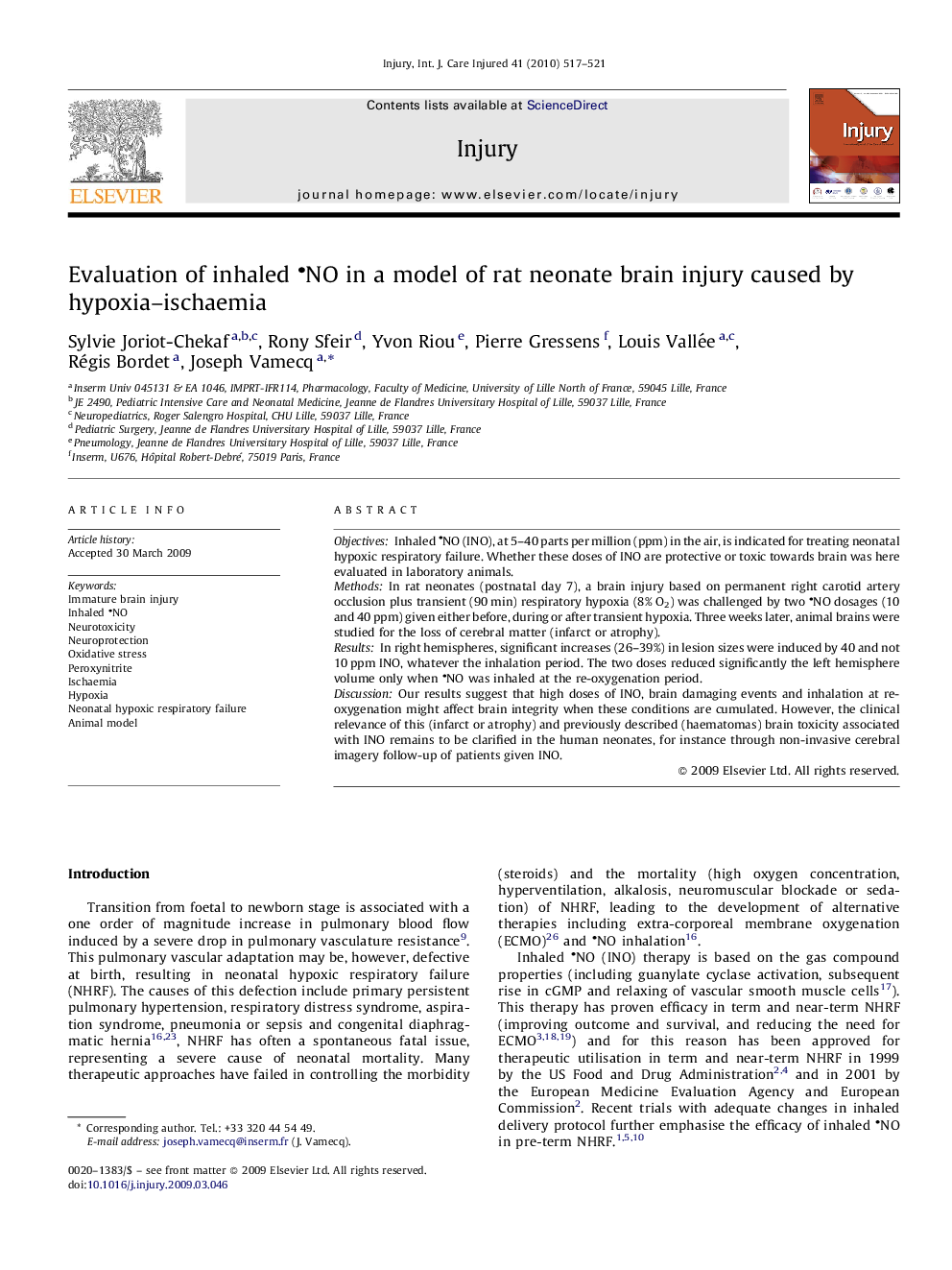| Article ID | Journal | Published Year | Pages | File Type |
|---|---|---|---|---|
| 3241468 | Injury | 2010 | 5 Pages |
ObjectivesInhaled NO (INO), at 5–40 parts per million (ppm) in the air, is indicated for treating neonatal hypoxic respiratory failure. Whether these doses of INO are protective or toxic towards brain was here evaluated in laboratory animals.MethodsIn rat neonates (postnatal day 7), a brain injury based on permanent right carotid artery occlusion plus transient (90 min) respiratory hypoxia (8% O2) was challenged by two NO dosages (10 and 40 ppm) given either before, during or after transient hypoxia. Three weeks later, animal brains were studied for the loss of cerebral matter (infarct or atrophy).ResultsIn right hemispheres, significant increases (26–39%) in lesion sizes were induced by 40 and not 10 ppm INO, whatever the inhalation period. The two doses reduced significantly the left hemisphere volume only when NO was inhaled at the re-oxygenation period.DiscussionOur results suggest that high doses of INO, brain damaging events and inhalation at re-oxygenation might affect brain integrity when these conditions are cumulated. However, the clinical relevance of this (infarct or atrophy) and previously described (haematomas) brain toxicity associated with INO remains to be clarified in the human neonates, for instance through non-invasive cerebral imagery follow-up of patients given INO.
